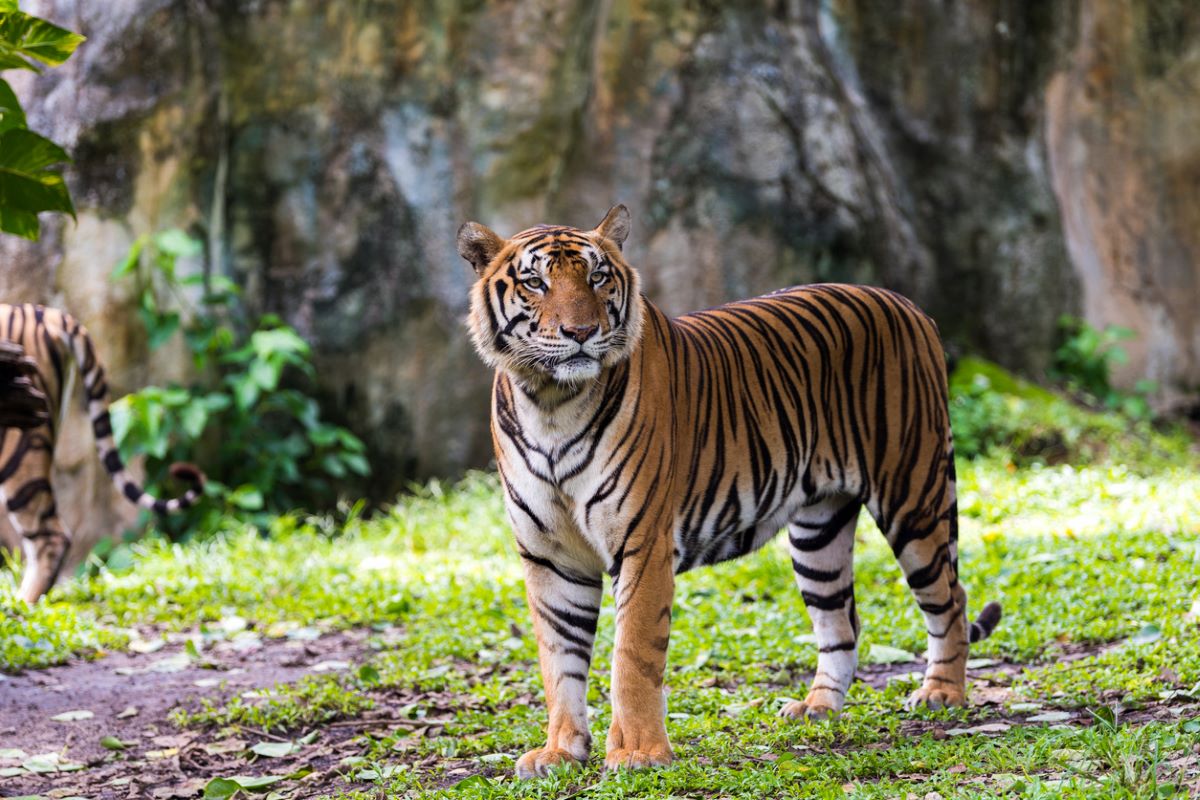Enjoy ecological wonders with the thrill of wildlife in Madhya Pradesh
Adventure, discovery, and the thrill of the unknown are calling!
Every Year 29th of July is marked as International Tiger Day. It is a unique animal which plays a pivotal role in the health and diversity of the ecosystem in the wild.

representational image (iStock photo)
The big cat Tiger, is at the helm of the food chain. What does it indicate when this big cat population is dwindling fast. With just around 3, 900 wild tigers remaining in the world, does it indicate a severe threat to food chain cycle directly impacting the humans?
Tiger is not just a charismatic species or just another wild animal living in some far away forest. It is a unique animal which plays a pivotal role in the health and diversity of the ecosystem in the wild. During past few decades the big cat population has fast dwindled. In the 1990s, when there were an estimated 100,000 tigers in the wild to now with merely 4000.
Advertisement
Every Year 29th of July is marked as International Tiger Day.
Advertisement
In a country like India around two hundred years ago, an estimated 58,000 tigers roamed in the forests. It was easy to see the tiger in its natural habitat. Centuries of hunting and habitat destruction left fewer than 2,000 wild individuals by the 1970s. In 1973 government of India set up a massive conservation scheme called Project Tiger to ban hunting and boost the population of its national animal.
But after decades of tiger conservation efforts have things really changed for this remarkable animal?
Conservation efforts in recent years mean that tiger numbers are definitely on the rise, but they are certainly not out of the woods yet. The status for the tigers is still Endangered.
Current tiger populations are extremely difficult to calculate as their habitat is so fragmented, but the cats are classified as endangered.
The conservation of tigers is not just about increasing their numbers as more tigers require more habitat, which is becoming less and less available each day. It is important that tiger populations stop dwindling, and habitat stops being lost.
Tigers are facing an increasing number of problems when it comes to surviving in the regions they have previously thrived in for thousands of years. Prime Minister, Narendra Modi, in his tweet, lauded the efforts of the activists who have rigourously worked towards creating awareness about the declining population of the tigers.
On International Tiger Day, I laud all those who are actively working to protect the tiger. It would make you proud that India has 52 tiger reserves covering over 75,000 sq. km. Innovative measures are being undertaken to involve local communities in tiger protection. pic.twitter.com/JlF8dQ3cxn
— Narendra Modi (@narendramodi) July 29, 2022
Tiger is a top predator which is at the apex of the food chain and keeps the population of wild ungulates in check, thereby maintaining the balance between herbivores and the vegetation upon which they feed. Therefore, the presence of tigers in the forest is an indicator of the well being of the ecosystem. The extinction of this top predator is an indication that its ecosystem is not sufficiently protected, and neither would it exist for long thereafter.
If the tigers go extinct, the entire system would collapse.
For e.g. when the Dodos went extinct in Mauritius, one species of Acacia tree stopped regenerating completely. So, when a species goes extinct, it leaves behind a scar, which affects the entire ecosystem. Another reason why we need to save the tiger is that our forests are water catchment areas.
Therefore, it’s not just about saving a beautiful animal. It is about making sure that our well being is maintained as the forests are known to provide ecological services like clean air, water, pollination, temperature regulation etc.
Advertisement